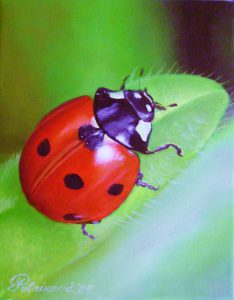
Once you’ve identified what plants you have in your yard it’s time for the fun part. Shopping! Well, not just yet. First, assess the living conditions where your new plants will be dwelling. Is it sunny or shady? Is your soil acidic or alkaline and will your plants get watered regularly? These are all important questions to ask before you go plant shopping. Use tools such as the Florida-Friendly Landscaping™ Guide to Plant Selection & Landscape Design booklet or the online FloridaYards.org plant database to make a list of right plants for your space.
So, now you have a thriving pollinator garden and you can’t keep track of all the different birds and butterflies you’ve seen visit. Then tragedy strikes. Suddenly you have caterpillars eating your beautiful plants down to bare stems! There’s tiny yellow insects completely covering some leaves and a myriad of alien-like bugs you’ve never seen before. Your immediate instinct (after panic) might be to grab the closest insecticide you can find and start spraying.
Stop! Put the insecticide down and let’s figure out if you have good bags or bad bugs. Remember what we said about host plants, such as milkweed? Plant these in clumps behind non-host plants or in a less noticeable area if you don’t like the look of munched on plants. What about the aphids? Did you know those are food for lady bugs and other beneficial insects, like parasitic wasps, that keep pests down? Ask your Marion County Extension Office for help identifying what insects you have and if the use of pesticides is needed. Sometimes you may be able to use less harmful products such as neem oil or a couple of drops of dish soap in water to keep the balance of good bugs and bad bugs in your garden.
 1
1
